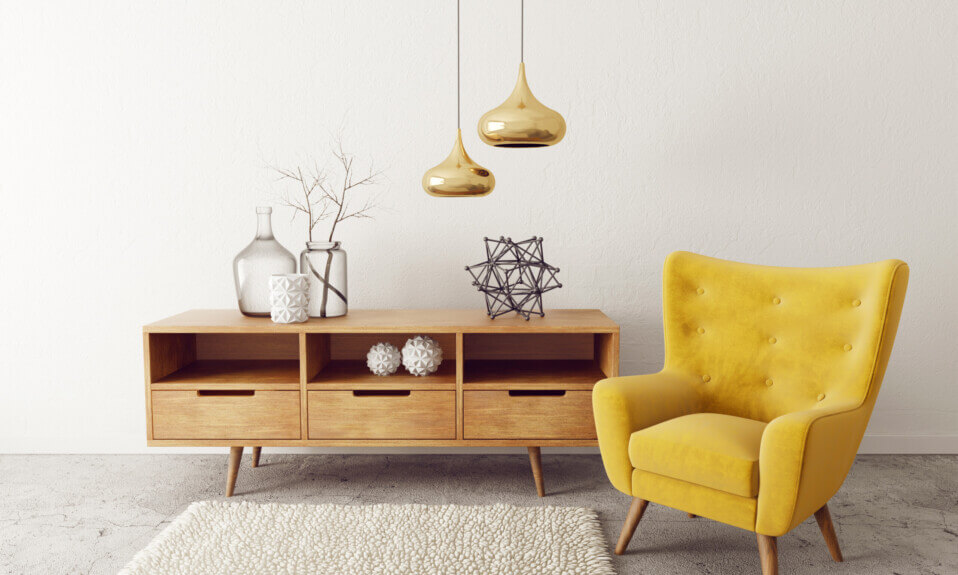With them, professionals are responsible for reflecting exactly how an interior space will look after their work. Even the colors it will have. Thus, they reflect on the paper and the layout of the spaces. Also its furniture and textile elements, such as rugs and curtains.
In order to achieve this, yes, it is necessary tofirst train as a decoratorthrough specialized studies in interior decoration that include the teaching of these graphic representation techniques. But what are these representation techniques? Discover them below.
What are graphic representation techniques?
Graphic representation techniques aredifferent ways of visually communicating an ideaor a concept. To do this, the person in charge of capturing these ideas or concepts must use certain specific elements. Fundamentally,images, drawings and graphic symbols. Besides, he can’t do it just any old way. He must use different techniques and methods for this. And use the appropriate instruments in each case.
Graphic representation techniques have beenpresent throughout almost the entire historyof mankind. Since prehistory, with cave paintings, humans represented through drawings what they saw, imagined and thought. They did it through scenes from their daily lives. These have survived to this day and allow us to get an idea of how they lived. From then until now, the techniques used to represent reality have been evolving and spreading.
They have spread so much that they are in practically all aspects of our lives. Whether in our time and leisure spaces, as in the professional field. Also in interior decoration. Of course, something remains unchanged in all areas: theelements that are used for representations. They are still lines, points, planes and curves. All this,accompanied by the most appropriate colorsin each case, serves to convey the message that you want to communicate at each step. In the case of interior decoration, it will be themeaning, arrangement and aspect that you want to give to each space.
Types of graphic representation techniques
The different types of graphic representation techniques can be classified into two main groups:plastic and computer graphic representation. To include them in one or the other, several factors are taken into account. Among them the graphics, the color, the lines, the shapes or the materials used to make them.
The techniques of the first type seek tohelp communication through a plastic language. Either with drawing, painting or using acrylic materials to capture what you want to draw. Above all, there are four, which we will see below: with a pencil, with a fountain pen, dry and wet.
Infographic techniques are used tocreate infographics and detailed plans. They stand out for theirprecision, andvarious computer programsare used to carry them out . Due to the precision of the designs obtained, these techniques greatly facilitate the transmission of the message to be communicated. In the case of interior decoration, it is the distribution and appearance that the spaces to be decorated will have. There are several programs, both paid and free, that allow you to create this type of infographics.
The 5 main techniques for interior decoration
As we have seen, there are several graphic representation techniques. Andall of them can be used in interior decoration. With each one of them, a different result can be obtained, in addition to being able to communicate the idea that we want to transfer in a different way, and to a different audience. They are the following:
- Pencil drawing technique: This is mostly used for making initial sketches and plans. Above all, it is used in the early stages of creating projects, not only for the ease of using pencils. Also because the designs are not permanent and the pencil can be easily erased to make the necessary modifications in each case. Even depending on the type of stroke you use, and the hardness of the pencil leads, you can make different strokes. Thus, with hard leads you can make annotations on the sketch. With the softer ones, you will be able to make blurs and shadows, which will give more perspective to the sketches.
- Stylus technique: compared to the possibility of erasing offered by the pencil technique, the stylograph technique is used so that the drawing created in pencil acquires a permanent character. None of its elements can be deleted to make changes. But in return, the result it offers is more attractive, defined and clean than pencil ones. It is usually carried out with pens and markers of different shades.
- Dry graphic representation techniques: are those used to add color to a drawing or an expression in which water does not intervene. Therefore, their application is quite fast and they do not require any precision or special care. These techniques are perhaps the ones that allow a higher level of intensity to be added to a sketch or design. To make them, different materials can be used: colored pencils, markers or chalk pastels in any of their formats (soft, pencil or hard). Several materials can also be combined, through what is known as a mixed technique.
- Wet renderingtechniques: These techniques are those that use water for the application of color in a drawing or design. They are more elaborate than the dry ones. Its application requires more precision, patience and time than they do. In return, the finish that is achieved with them of the sketches and drawings is much more artistic. Water, which as we have mentioned is the differentiating element of these techniques, is used to dilute the color. Thus, in general, the more water a color has, the more diluted it will be.
- Representation techniques with infographic elements: These graphic representation techniques are very visual. They allow elements and objects to be captured with some ease and the results they offer are very attractive and of great quality and precision.
These are the five maingraphic representation techniques used in interior decoration. Once you have mastered them all and are clear about which one is the most suitable for each stage and situation, go ahead and use them in your interior design projects!




